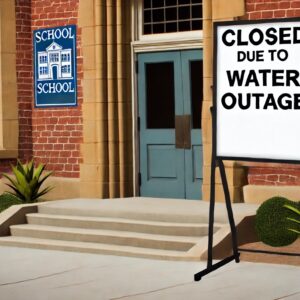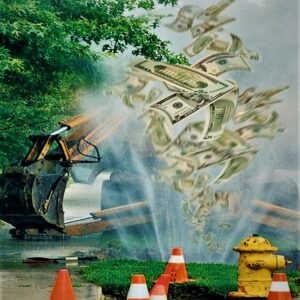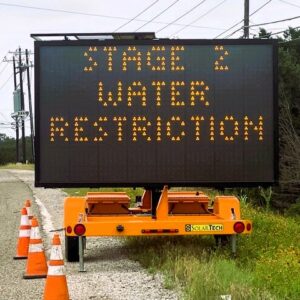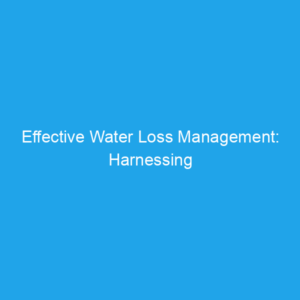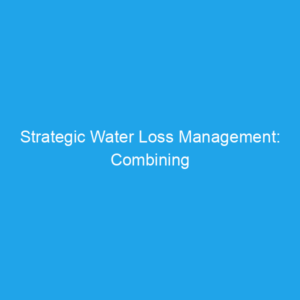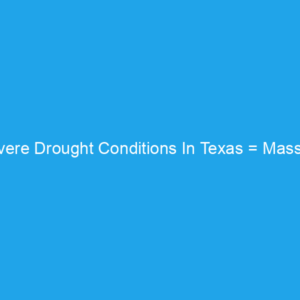By Sam Godfrey
The continuing drought crisis here in Texas affects many of our agricultural, commercial, and industrial enterprises as well as residential water users. This prolonged drought continues
to receive much attention in the media, and rightly so. The state legislature and governmental agencies are developing further conservation measures in an effort to ameliorate the situation.
There is another type of water crisis here in Texas, one that is receiving little, if any, public attention, one that is not widely known nor openly discussed. This hidden crisis is the
enormous volume of treated water lost from our public water supply distribution systems, day in and day out. In many instances, these losses are causing an additional, and
sometimes critical, financial squeeze on our public utility systems.
Of course the specifics contributing to this growing shortage of funds vary from system to system. Following (in no particular order of importance) are some of the typical situations confronting our water systems:
A. The costs of developing, processing and distributing safe, potable water continue to rise due to increases in costs associated with energy; compliance with drinking water regulations; costs of treatment chemicals and other consumables: and ground water withdrawal fees and other regulatory charges.
B. Political and public opposition to water user rate increases.
C. Physical loss of water escaping from aging distribution system infrastructures, causing our utilities to incur additional production costs and capital expenditures just to meet existing
demand. The value of that water is forever lost, thereby reducing the available cash flow needed for our utility enterprises to operate at optimum efficiency.
Perhaps for the sake of convenience or simplicity, water industry associations, agencies and water supply entities frequently describe water losses in terms of percentages. Some systems tell themselves and the agencies to which
they report, that their annual losses are “only” 8, 10, or 15%. This means that a system producing 10 million gallons per day with a reported 10% loss would not receive revenue to cover the cost of producing an extra one million gallons per
day, or approximately 365 million gallons per year, not a sum to sneeze at.
After many years of evaluating water distribution systems, the author has found that the loss percentages bandied about are frequently quite optimistic. One statewide survey, based in
part on voluntary and unsubstantiated reports, suggests a statewide urban water loss at around 15%. However, based on data developed as a result of in-depth analyses of
individual systems, these loss percentages usually fall within the range of 15% to 30%, with some systems reaching 40% to 50% losses, and more.
When governmental officials and water system management do become aware that water and revenue loss issues exist in their systems, all too often their well-intentioned, knee-jerk
reaction is to throw significant amounts of money at the apparent problem. A utility system should not begin to embark on any sort of costly program without first completing a
thorough and conclusive investigation sufficient to determine the nature of the problem, and to quantify its economic cost.
As a necessary first step, before taking any further measures, it is imperative that each water system determine with certainty the effective measuring accuracy of its production
meter(s) upon which any further investigations and possible remedies would be based.
In most systems, the production meters are of a size and flow capacity that requires either Class II Turbine, Propeller, Electro-Magnetic or other types of inferential meters, all of
which depend heavily on proper installation in order to deliver accurate and reliable data. So, regardless of the intrinsic accuracy that a meter may have had when leaving the
factory, that performance level is attained in the field only when the specific meter is suitable for the specific application and is properly installed. Proper application and installation
can be confirmed by qualified inspection and testing in place.
Why then is it so important to determine the accuracy of water production meters? Here are two real world examples to illustrate the benefits:
In an industry-heavy, municipal system on the Texas coast, an antiquated meter was being used to measure the total intake from its raw water source into its water treatment plant.
With careful and deliberate effort, this supply meter was tested and confirmed to be over-registering by 11%. As a result, the municipality had been paying 11% too much for the water they
were receiving. By engaging a diligent and unbiased accuracy test of their source meter, this municipality was able to reduce its water purchase costs and determine that its apparent
losses from the distribution system were significantly less than initially thought.
In a municipal system in East Texas, a battery of production meters were tested and found to be under-registering by 16%, due in part to poor meter installation and meter selection. As a
result of the tests, management determined that their actual water loss was 16% greater than previously thought. This prompted the need for a flow study, which led to the discovery
that the largest water user on the system was receiving water through a large diameter unmetered connection.
There have been cases when production meters or system data was so inaccurate that water loss reports indicated the reporting system sold more water than it produced!
One can see that using the results obtained from critical production meter evaluations, water systems will be able to determine the extent to which any further measures are
needed to identify and quantify water and revenue losses. Some of the follow-up actions that may be needed include, for example:
A. Distribution system flow measurements and analyses to evaluate the existing potential for underground leakage, system-wide, by zone, or sector.
B. Field inspections of existing customer meter connections and interconnections, to determine condition and conformance with appropriate size, type, installation requirements, etc.
C Evaluations of Customer Meter Reading, Billing and Data Management procedures.
D. Leak surveys to pinpoint locations where water is escaping from the distribution network (the need for which may be determined from the results of the flow measurements in A above).
Regardless of what the future may hold for Texas in terms of water availability and drought, the fact is that we need to take better care of the water we now have within the custody and
control of our public water supply systems.
State funding can help pay for repair
Several well-stocked state funds are available to help a utility repair its leaking infrastructure. Here’s a brief list:
- The Texas Water Development Fund
- The Water Infrastructure Fund
- The Rural Water Assistance Fund
- The Agricultural Water Conservation Grant and Loan Program
- The Economically Distressed Areas Program
For more information, contact the Texas Water Development Board at 512-563- 4841 or click here.





